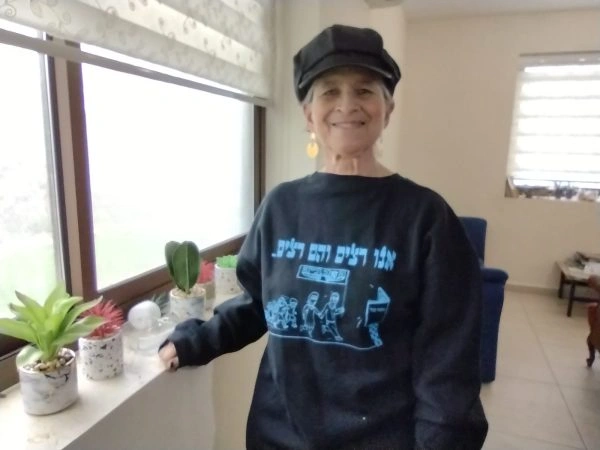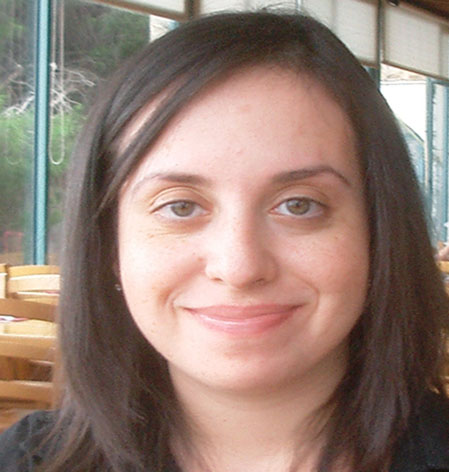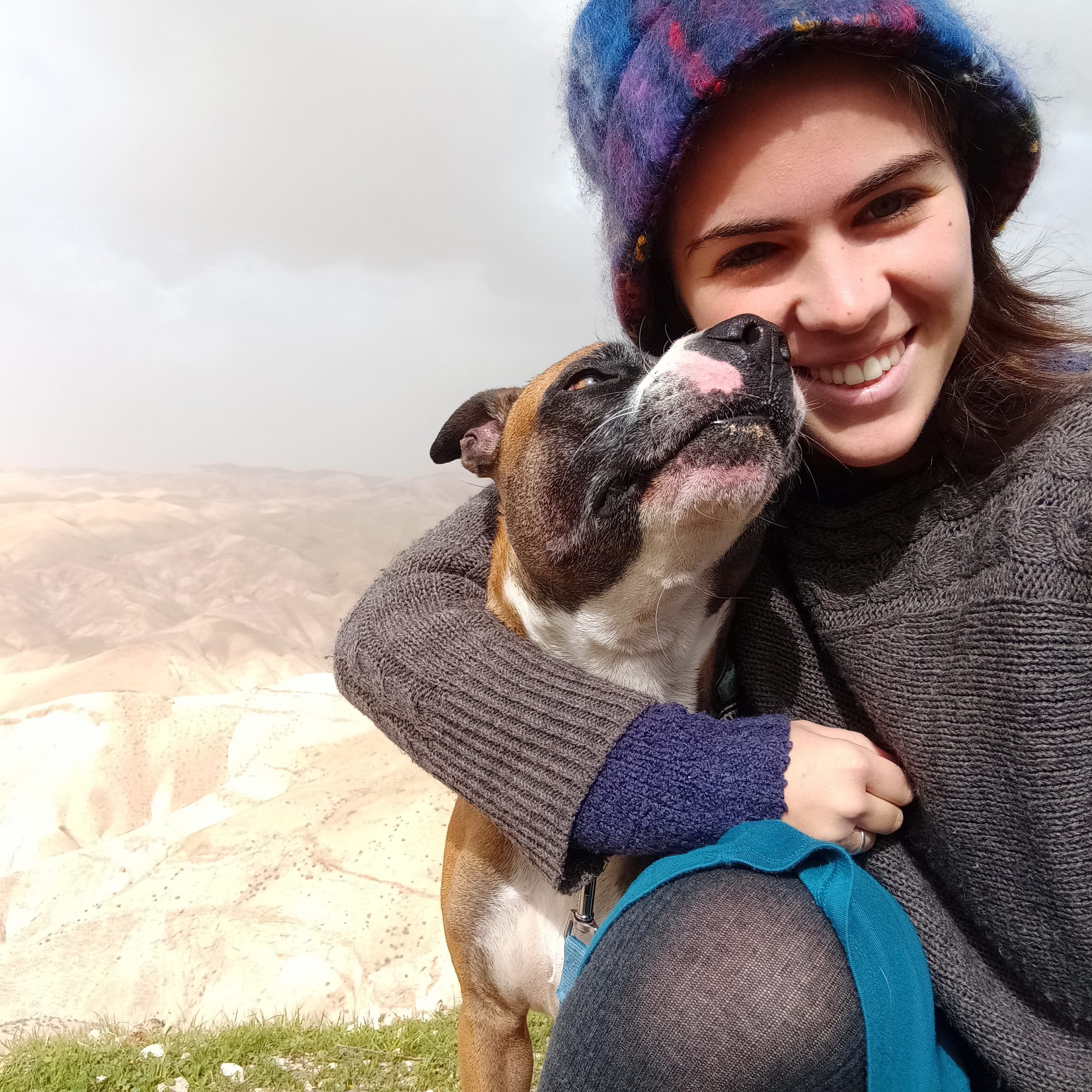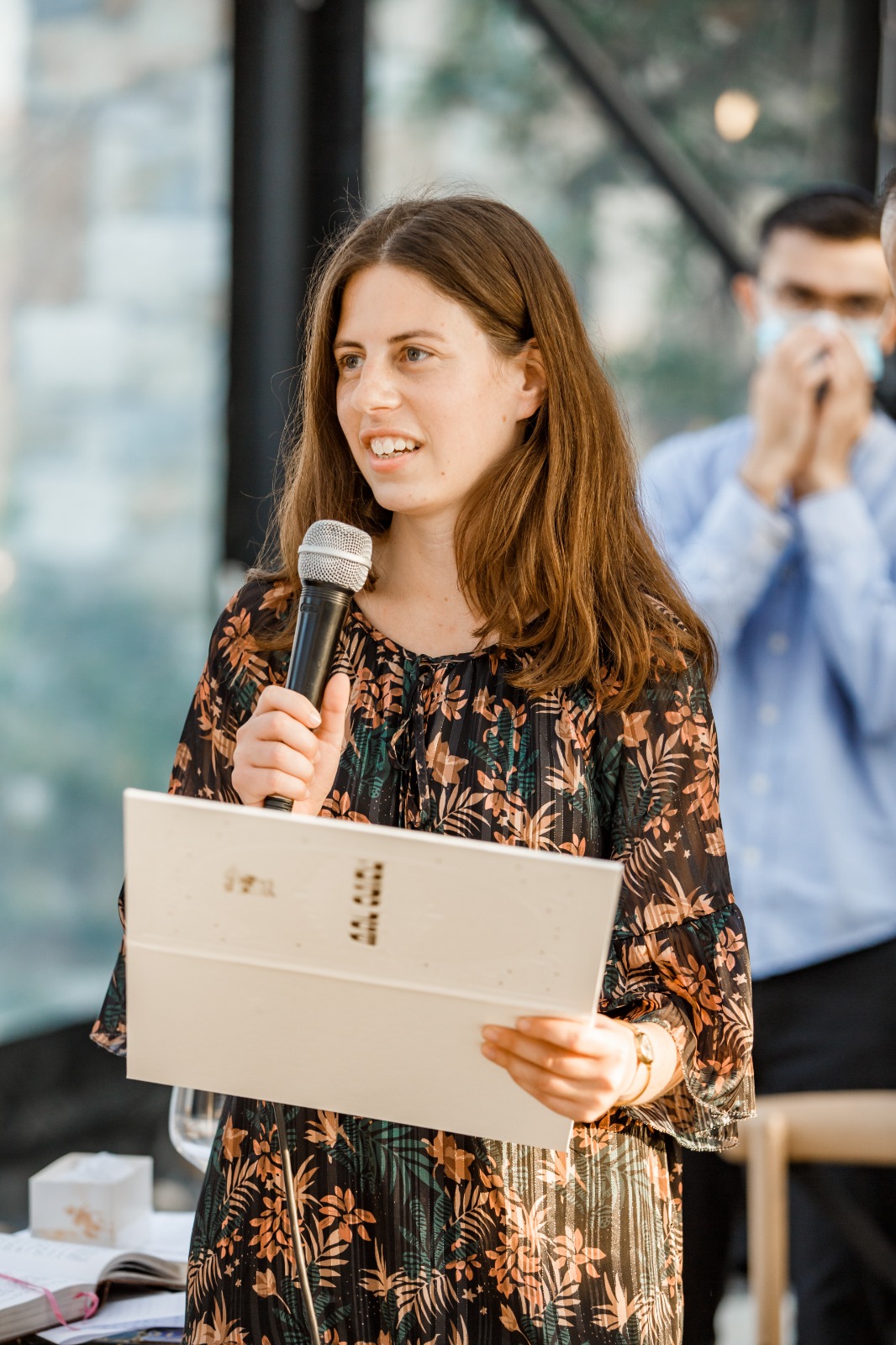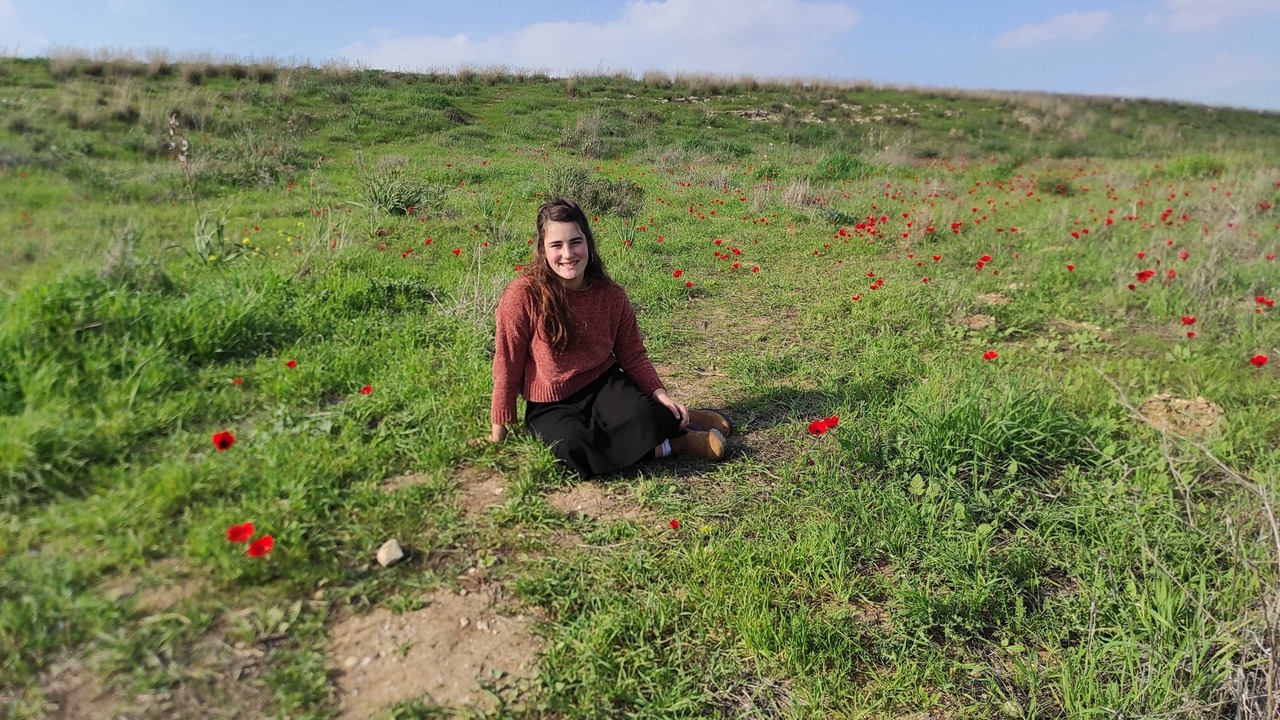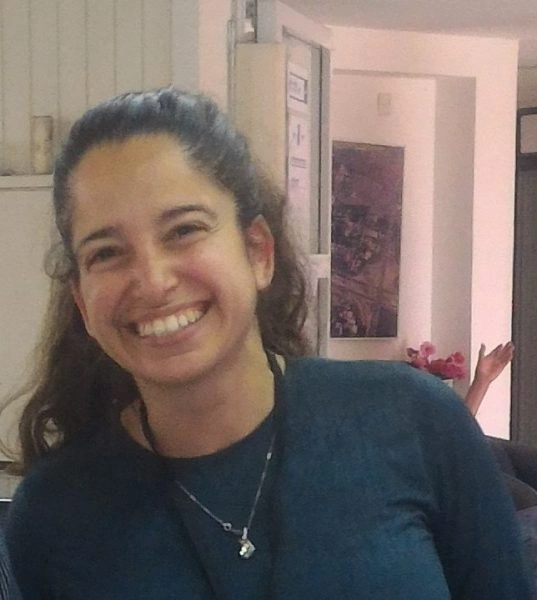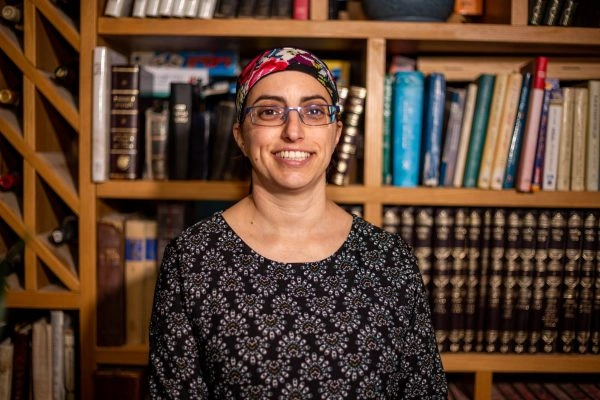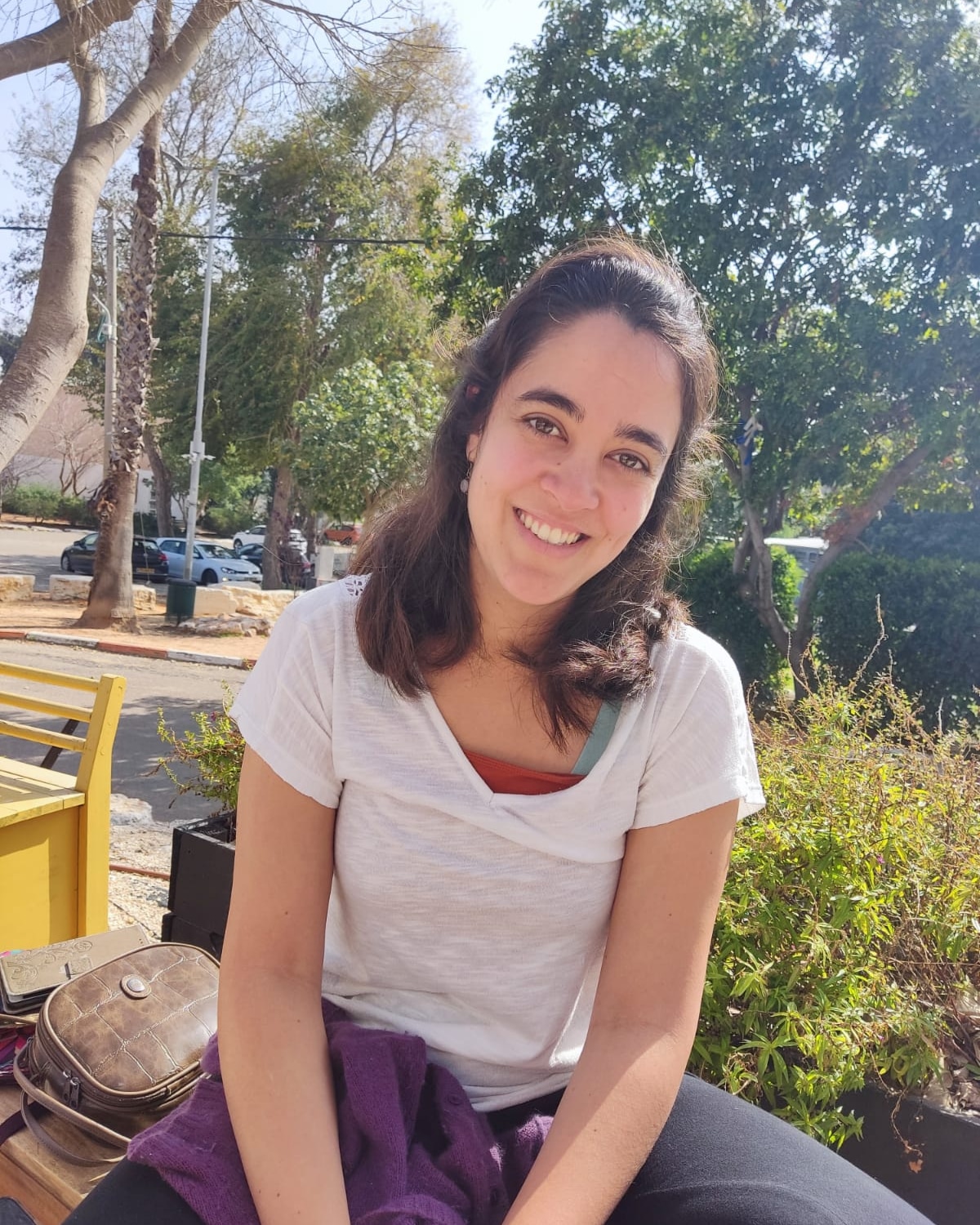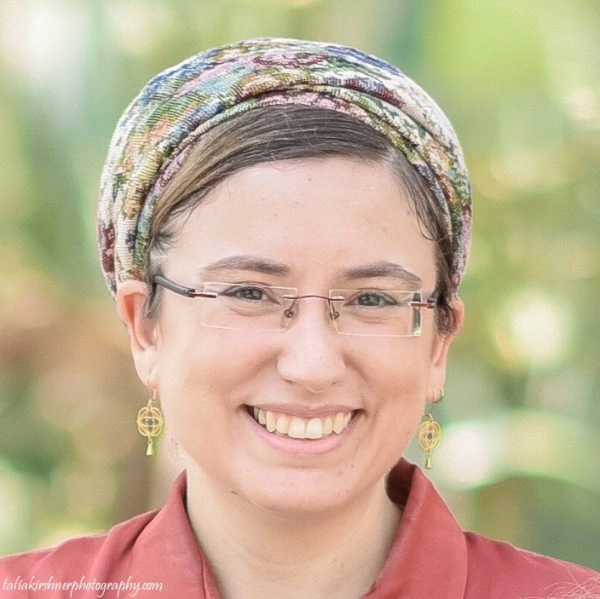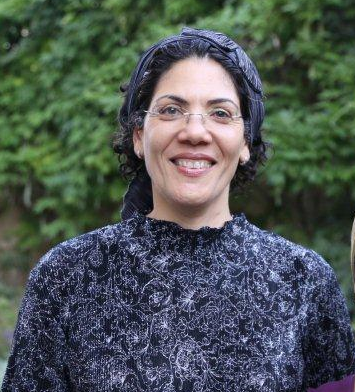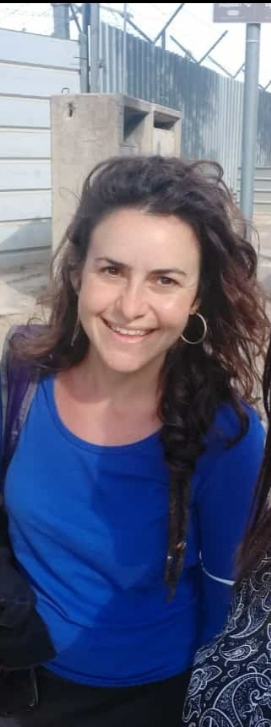יומא מח
רַב פָּפָּא: דַּבְּקֵיהּ לְקוֹמֶץ בְּדוּפְנֵיהּ דְּמָנָא, מַאי? תּוֹךְ כְּלִי בָּעֵינַן — וְהָא אִיכָּא, אוֹ דִילְמָא: הַנָּחָה בְּתוֹכוֹ כְּתִקְנוֹ בָּעֵינַן — וְהָא לֵיכָּא. תֵּיקוּ.
Rav Pappa: What is the halakha in a case where he stuck the handful of flour onto the side of the vessel? After the flour of a meal-offering has been separated, it must be placed in a vessel for burning, an action that sanctifies the flour. Rav Pappa inquires as to what the halakha is if the priest places the flour on the sides, instead of on the bottom of the vessel. The Gemara clarifies the two sides of the dilemma: Do we require the handful to be inside the vessel, and that is the case here? Or perhaps we require the handful to be placed properly inside the vessel, and that is not fulfilled in this instance. No answer is found for this question, and the Gemara concludes: Let it stand unresolved.
בָּעֵי מָר בַּר רַב אָשֵׁי: אַפְכֵיהּ לְמָנָא וְדַבְּקֵיהּ לְקוֹמֶץ בְּאַרְעִיתֵיהּ דְמָנָא, מַהוּ? הַנָּחָה בְּתוֹכוֹ בָּעֵינַן — וְהָא אִיכָּא, אוֹ דִילְמָא הַנָּחָה כְּתִקְנוֹ בָּעִינַן — וְלֵיכָּא? תֵּיקוּ.
Mar bar Rav Ashi raised a similar dilemma: What is the halakha if the priest overturned the vessel and stuck the handful to an indentation in the underside of the vessel? Do we require the handful to be inside the vessel, and that requirement is fulfilled here; or perhaps we require it to be placed properly in the vessel, and that is not the case here? With regard to this question as well, the Gemara states: Let it stand unresolved.
בָּעֵי רַב פָּפָּא: מְלֹא חׇפְנָיו שֶׁאָמְרוּ — מְחוּקוֹת, אוֹ גְדוּשׁוֹת? אֲמַר לֵיהּ רַבִּי אַבָּא לְרַב אָשֵׁי, תָּא שְׁמַע: מְלֹא חׇפְנָיו שֶׁאָמְרוּ — לֹא מְחוּקוֹת, וְלֹא גְּדוּשׁוֹת, אֶלָּא טְפוּפוֹת.
§ Rav Pappa raised a dilemma: Should the handfuls to which the Sages referred be smoothed over or slightly overflowing? Rabbi Abba said to Rav Ashi: Come and hear an explicit statement in a baraita: The handfuls to which the Sages referred should be neither smoothed over nor overflowing, but full, without any flour spilling out.
תְּנַן הָתָם: נִשְׁפַּךְ הַדָּם עַל הָרִצְפָּה וַאֲסָפוֹ פָּסוּל. מִן הַכְּלִי עַל הָרִצְפָּה וַאֲסָפוֹ — כָּשֵׁר.
§ We learned in a mishna there, in Zevaḥim 32a: If the blood of the sacrificial animal spilled on the floor instead of being collected directly into a vessel, and a priest collected it from there into a vessel, it is disqualified, as it was not collected properly. Conversely, if the blood spilled from the vessel onto the floor, after it was collected properly, and a priest collected it and put it back in the vessel, it is valid.
מְנָא הָנֵי מִילֵּי? תָּנוּ רַבָּנַן: ״וְלָקַח מִדַּם הַפָּר״, מִדַּם הַנֶּפֶשׁ, וְלֹא מִדַּם הָעוֹר, וְלֹא מִדַּם הַתַּמְצִית.
The Gemara asks: From where are these matters derived? As the Sages taught in a halakhic midrash: “And the anointed priest shall take from the blood of the bull” (Leviticus 4:5); this means that the priest shall take from the blood of the soul, i.e., the bull’s blood that flows from the place of slaughter as the animal dies, and not from the blood of the skin, which bleeds out when the skin is cut before the slaughter, nor from the blood squeezed from an animal after the initial spurt.
״מִדַּם הַפָּר״, דָּם מֵהַפָּר יְקַבְּלֶנּוּ, דְּאִי סָלְקָא דַעְתָּךְ ״מִדַּם הַפָּר״ — ״מִדָּם״, וַאֲפִילּוּ מִקְצָת דָּם, וְהָאָמַר רַב יְהוּדָה: הַמְקַבֵּל, צָרִיךְ שֶׁיְּקַבֵּל אֶת כׇּל דָּמוֹ שֶׁל פַּר, שֶׁנֶּאֱמַר: ״וְאֵת כׇּל דַּם הַפָּר יִשְׁפּוֹךְ אֶל יְסוֹד מִזְבַּח״.
The baraita interprets the phrase “from the blood of the bull,” as though these words were written in a different order: Blood from the bull, i.e., the priest shall receive it directly. For if it should enter your mind that the letter mem, which means “from” in the phrase “from the blood of the bull,” is limiting and indicates that even if the priest received some of the blood, his action is acceptable, didn’t Rav Yehuda say: He who receives the blood must receive all of the blood of the bull, as it is stated: “And all the blood of the bull he shall pour out on the base of the altar” (Leviticus 4:7)? This verse emphasizes that the priest must pour all of the bull’s blood, which is possible only if he has collected all of it.
אֶלָּא שְׁמַע מִינַּהּ: מַאי ״מִדַּם הַפָּר״ — דָּם מֵהַפָּר יְקַבְּלֶנּוּ. וְקָסָבַר: גּוֹרְעִין וּמוֹסִיפִין וְדוֹרְשִׁין.
Rather, learn from this that what is the meaning of the phrase: “From the blood of the bull”? It means that the priest must receive the blood directly from the bull. And this Sage maintains that the Sages subtract and add and interpret homiletically, i.e., one may take a letter from one word, insert it into a second word, and explain the phrase in that manner.
בָּעֵי רַב פָּפָּא: נִתְפַּזֵּר הַקְּטוֹרֶת מִמְּלוֹא חׇפְנָיו, מַהוּ? יָדוֹ כְּצַוַּאר בְּהֵמָה דָּמֵי — וּפְסוּלָה, אוֹ דִילְמָא כִּכְלִי שָׁרֵת דָּמֵי — וְלָא פְּסוּלָה? תֵּיקוּ.
§ Rav Pappa raised a dilemma based on the above ruling: What is the halakha if the incense from his handfuls scattered? Is his hand considered like the neck of the animal, and the incense is disqualified? Or perhaps his hand is considered like a vessel used in the Temple service, and if the incense fell from his hand it is not disqualified. No answer was found for this question either, and the Gemara again concludes: Let it stand unresolved.
בָּעֵי רַב פָּפָּא: חִישֵּׁב בַּחֲפִינַת קְטוֹרֶת, מַהוּ? מִי אָמְרִינַן יָלֵיף ״מְלֹא״ ״מְלֹא״ מִמִּנְחָה, מָה הָתָם מַהְנְיָא בַּהּ מַחְשָׁבָה, הָכָא נָמֵי מַהְנְיָא בַּהּ מַחְשָׁבָה, אוֹ לֹא?
§ Rav Pappa raised another dilemma: What is the halakha if the High Priest thought a disqualifying thought during the taking of the handful of the incense, e.g., if he intended to burn it after its appropriate time? Does this thought invalidate the rite or not? Do we say that this halakha is derived by means of a verbal analogy of “handfuls” and “handfuls,” from the case of a meal-offering, as follows: Just as there, with regard to the meal-offering, thought is effective to invalidate it, so too here, with regard to taking a handful of incense, thought is effective to invalidate it? Or should the two cases not be compared?
אֲמַר לֵיהּ רַב שִׁימִי בַּר אָשֵׁי לְרַב פָּפָּא: תָּא שְׁמַע: הוֹסִיף רַבִּי עֲקִיבָא (הַקּוֹמֶץ) וְהַקְּטוֹרֶת, וְהַלְּבוֹנָה, וְהַגֶּחָלִים, שֶׁאִם נָגַע טְבוּל יוֹם בְּמִקְצָתָן — פָּסַל אֶת כּוּלָּן.
Rav Shimi bar Ashi said to Rav Pappa: Come and hear a resolution to your dilemma: Rabbi Akiva added the handful of fine flour and the incense, and the frankincense, and the coals that are collected in a vessel, to the ruling of the Sages that if one who immersed himself during the day touched part of them, he disqualifies all of them. Due to the respect in which sacred objects are held, these objects are treated as one solid unit. This is so despite the fact that its parts are not really attached to each other but are separate small segments and therefore, logically, one who immersed himself during the day should disqualify only those parts of the item with which he came into direct contact.
קָא סָלְקָא דַּעְתָּךְ: מִדְּפָסַל טְבוּל יוֹם — פָּסְלָה נָמֵי לִינָה. וּמִדְּלִינָה פָּסְלָה — פָּסְלָה נָמֵי מַחְשָׁבָה.
The Gemara explains: It enters your mind that from the fact that one who immersed himself during the day disqualifies these items by touch, therefore leaving them after their permitted time likewise disqualifies them; and from the fact that leaving them after their time disqualifies them, therefore thought likewise disqualifies them. Consequently, as incense is similar to flour with regard to ritual impurity, it is also disqualified by the priest’s improper thought.
בָּעֵי רַב פָּפָּא:
§ Rav Pappa raised another dilemma:
חִישֵּׁב בַּחֲתִיַּית גֶּחָלִים, מַהוּ? מַכְשִׁירֵי מִצְוָה כְּמִצְוָה דָּמוּ, אוֹ לָא? תֵּיקוּ.
What is the halakha if he thought invalidating thoughts during the raking of the coals? Does this thought invalidate the incense? The Gemara elaborates: The question here is whether actions that facilitate the performance of a mitzva are considered like the mitzva itself. If so, merely raking the coals, which facilitates the mitzva of the incense, is like burning the incense itself; therefore, an improper thought would disqualify the incense. Or perhaps actions that facilitate the performance of a mitzva are not considered part of the mitzva itself. No answer was found for this question either, and the Gemara once again concludes: Let it stand unresolved.
בְּעוֹ מִינֵּיהּ מֵרַב שֵׁשֶׁת: הוֹלָכָה בִּשְׂמֹאל, מַהוּ? אֲמַר לְהוּ רַב שֵׁשֶׁת, תְּנֵיתוּהָ: נָטַל אֶת הַמַּחְתָּה בִּימִינוֹ וְאֶת הַכַּף בִּשְׂמֹאלוֹ.
§ The Sages raised a dilemma before Rav Sheshet: What is the halakha with regard to carrying the blood in one’s left hand? Is this action valid, or is carrying, like receiving and sprinkling the blood, an act that must be performed with the right hand? Rav Sheshet said to them: We already learned it; there is an answer to this question from the mishna: He took the coal pan in his right hand and the spoon in his left hand. This proves that although the spoon is carried in the left hand to the place of the service, the rite is valid.
וְנִפְשׁוֹט לְהוּ מֵהָא דִּתְנַן: הָרֶגֶל שֶׁל יָמִין בִּשְׂמֹאל וּבֵית עוֹרָהּ לַחוּץ!
The Gemara asks: And let us resolve this dilemma for them from that which we learned in a mishna: The priest who is privileged to carry the head and the leg of the daily offering to the ramp carried the right leg in his left hand, with its entire hide facing outward and the place of the slaughter on the neck facing the priest. This mishna also proves that carrying with the left hand is acceptable.
אִי מֵהָתָם, הֲוָה אָמֵינָא: הָנֵי מִילֵּי הוֹלָכָה דְּלָא מְעַכְּבָא כַּפָּרָה, אֲבָל הוֹלָכָה דִּמְעַכְּבָא כַּפָּרָה — לָא, קָמַשְׁמַע לַן.
The Gemara rejects this contention: If the proof is from there, I would have said: That applies only to a type of carrying that does not invalidate atonement, as even if the limbs are not carried up to the altar, atonement is nevertheless achieved through the sprinkling of the blood. The rite is valid even if the limbs of the daily offering are not burned at all. However, with regard to the type of carrying that does invalidate atonement, e.g., carrying the blood to the altar, no, perhaps it must be done specifically with the right hand. Rav Sheshet therefore teaches us from the mishna that although carrying the spoon is necessary for the mitzva, the rite is nevertheless valid if it is carried in the left hand.

